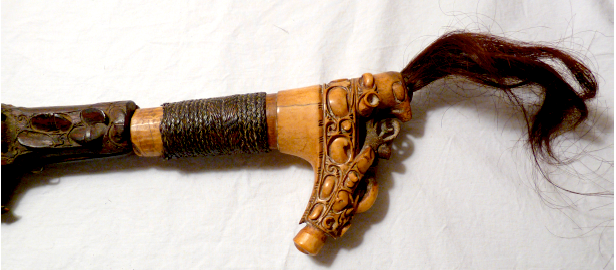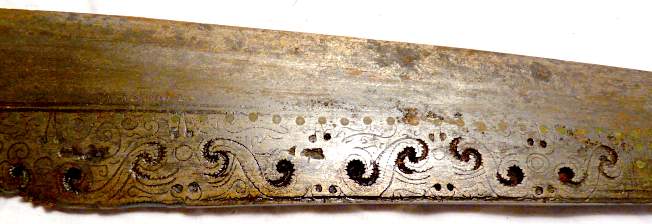Mandau / Ambang
The ambang or mandau (the term for similar weapons with blade cores of finer metal) was formerly an important practical and prestige weapon among Dayak peoples, and continues to be a prized ceremonial and deorative object. Known as parang ilang among the Bidayuh and Penan people, malat by the Kayan people or baieng by the Kenyah people, the mandau or ambang is mostly ceremonial, though it was originally associated with the headhunting ceremony, in which people would gather to attack other tribes and gather heads to be used in various ceremonies, The ambang or mandau is both a work of art in itself and a formidable weapon. These short swords are, as this example, ornamented extensively on blade, hilt and scabbard with natural or geometric motifs or, as with this one, a combination of the two.
Usually the most striking element is the upper hilt, frequently as here carved of deer antler. These were intended as spirit charms, to work for the wielder and against others. Elaborate and skillfully smithed blades were attached to the hilts, and all encased in further decorated sheaths. Where retained as heirlooms, these elaborate swords are still a part of men's ceremonial attire.
This weapon is very heavily decorated on all parts – the elaborately wrapped and carved scabbard has a full-length leech design (the land leech, or lintah, is a common decorative theme across Dayak artforms), a blade (convex on one side and somewhat concave on the other) hand stamped and decorated with brass insets that tapers toward the hilt which is carved from a deer antler with continued leech motifs and a long tuft of hair.
Wood, antler, rattan, hair, iron, brass; 9 x 93cm, blade 54cm.
Nelson South East Asia Collection © 2025


